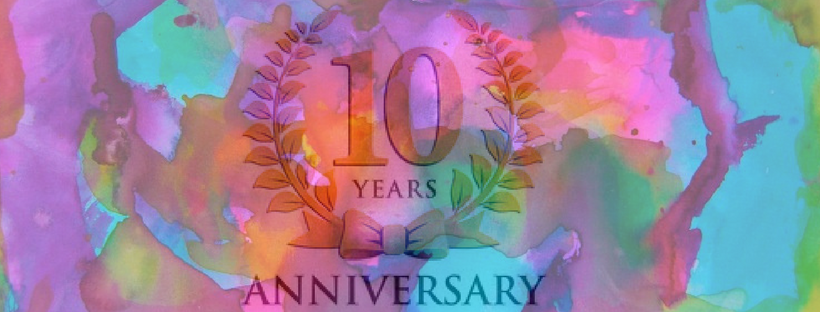Art Idea: Mini Theaters

Chloe Bradwell, a drama practitioner and current PhD candidate at the University of Exeter in the United Kingdom, developed a way to share and create stories with individuals in long-term care. Each mini theaters invites you into a world of imagination. Below, Chloe shares her tips on how to create your own theatres and use them with individuals in long-term care.
What’s the purpose of the cards?
- To provide a tool of communication between isolated care home residents and
people from their local community - To serve as a prompt for care home residents and care staff to engage in discussions
and creative storytelling
What should they look like?
- Fun and engaging
- Suggestive rather than realistic
- Beautiful
- Crafty (they don’t need to be perfect to be beautiful!)
- Personal – they’re a representation of YOUR imagination
- Sensorial – they should be designed to be touched and smelled
You will need: (Suggested tools – Feel free to add or modify)
- A computer and printer and/or magazines, old cards etc. any pictures that have
people in them and interesting items that you can cut out - 220gsm (or thicker) white or colored paper A4
- Scissors
- Glue (strong PVA to stick the sensory fabric and normal glue for the paper)
- Sensory material such as cotton balls, dry flowers, old pieces of fabrics, card paper,
tissue paper, ribbons etc. – anything that has an interesting texture - Colored felt paper sheet to make the curtains
- Colored pens
- Scented essential oils
- Glitter pots


How to Design Your Card
You can download the full instructions at the bottom of this post.
1. Make your ‘mini-theatre’ template. Take your A4 sheet of paper ((ideally 220gsm or thicker) and hold it in landscape format. Fold each side of your sheet towards the middle. Try to make the fold equal for each curtain, for example you could fold 5cm
on each side of the sheet. Each folded side will help holding your curtains at the end (see step 9).
2. Choose your character(s). This could be a picture of a stranger that is free of rights on the internet or a model in a magazine. Try and find pictures of people in a pose that inspires you to create a story. Cut it, carefully following the edges, and leave it aside.
3. Choose a background. Think about where your characters are located. It can be anywhere, so don’t hesitate to be creative. It can be somewhere familiar like a forest, a street, a house or a boat, or somewhere surreal like on the moon, in another galaxy
etc. Let your imagination run free! You can print an already made background or make it yourself through drawing, painting and/or collage.
4. Pick some fun elements. Think surrealistic, magical and funny rather than realistic. Find your own artistic tone. Make it colourful but not overwhelming – try to keep it neat and focus on selected elements rather than making the card too busy.
5. Arrange the elements. Arrange and glue all your elements on the A4 card template.
6. Add the sensory material. Think about which elements could be in relief or stand out. Try to have a variety of textures. For example, something soft, fuzzy, rough etc. but try not to overcrowd it (3 textures are usually good).
7. Add glitter. Pick an element that could be highlighted with glitter.
8. Add a scented oil. This can be on a particular part of the card, for example in a cloud. Or if you can’t find anywhere suitable you could just sprinkle some drops on the curtains.
9. Make the curtains. Take your felt and pick a colour that you think looks harmonious with the colour scheme of your card. Cut out two curtains that are slightly longer than your folded sides (I like to make mine about 7/8cm long). Glue the felt curtain to each folded side to make the curtains. Feel free to decorate them as you’d like, I like to make scallops forms at the end of mine or stick nice ribbons on them!

How to write your letter
1. Turn your card over so that you can write a short letter on the back.
2. Make it personal. You don’t need to write a long letter but make sure that you are
saying hello and asking the person or group how they are doing. You can say
something about yourself too, if you’d like.
3. Transition into the theme of the card before to ask questions.
4. Ask some open questions. Here are some examples that work for almost every card
but feel free to add to it or make up your own:
- How shall we name the character(s)?
- Who are they?
- What are they thinking?
- Where are they?
- What sounds can we hear?
- What happens next?
5. Finish with a ‘beautiful question’ that relates to the theme of your card and doesn’t
have any right or wrong answer. You can look at the TimeSlips website for
inspiration.
Here are some additional examples that I have used in the past:
- If a magical balloon could take you anywhere, where would you go?
- What would be your superhero name?
- What do you think clouds taste like?
6. Conclude with a personal message and signature.
7. Pop into an envelope and send to the care home! You can include a pre-paid envelop
with your address to make it easier if the person wants to write back to you.
NB: You can also include small props in your cards. For example, I once included a pair of
pink paper glasses and wrote on the card ‘Try these magical glasses, they’ll allow you to see
the world exactly how you wish it would be’


How to Make the Most of the Cards
If you want (and have the time) I’d suggest bringing a pen and notepad with you to record people’s answers to the questions found in the cards. You can send these back to us so that we can keep an archive of all the wonderful stories you’ve created.
The cards can be read 1:1 or in a small group.
Sit somewhere comfortably. Make a favourite drink, bring some treats. Make an event of it and open the card together.
Encourage the resident(s) to look, touch and smell the card.
Start reading the letter at the back and take the time to ask each question. Don’t rush and give the person or group the time to give their answer.
Forget about memory, or what’s ‘right or wrong’, and accept every answer given by the residents. If several answers are provided to the same question, accept and write them all down. For example, a character can absolutely be named ‘Mister John Sam Rose Mickey Mouse’.
If the card features famous people try not to focus on this but rather let the resident make up names. Don’t hesitate to rename the celebrity – it’s all about imagination.
Look out for non-verbal responses too. Sometimes a facial expression, a gesture, a humming noise etc. could all be the beginning of an answer. Echo these and build on them. For example, if a resident taps their fingers on their chair this could be acknowledged as a response and be built into the story by saying ‘this is Mister John Sam Rose Mickey Mouse, he’s on the moon and he can hear a —tap, tap, tap— (repeat the noise).
Don’t hesitate to pause and deviate to include songs, dancing etc. It’s all about having fun. For example, if a resident suggests that the character is listening to jazz music, why not play some jazz on your phone or simply try to hum some jazz songs together.
Download the full PDF with instructions below.


